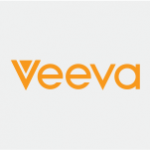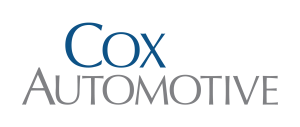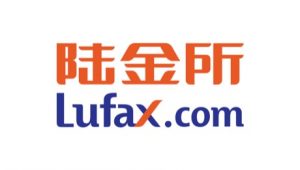Vertical SaaS: Everything You Need to Know
Software-as-a-service (SaaS) solutions are a staple in our homes and lives as they include such preeminent companies as Netflix and Uber; however, despite this prevalence few people have heard of vertical SaaS. Even fewer actually understand what vertical SaaS is and how it differs from the alternative, horizontal SaaS.
Vertical SaaS is software-as-a-service for a particular industry such as automotive manufacturing, healthcare, or retail. These solutions utilize the Internet for cloud computing, so users and clients can access the software online without having to download it. This usually requires a subscription which is how many SaaS companies generate revenue.
Whether you are looking to start a new vertical SaaS product, implement a new strategy for an existing business, or just gain a better understanding of current SaaS trends, this article is packed with the information you need.
What Is Vertical SaaS?
Since the increase of social distancing and working from home, people are relying even more on SaaS products like Zoom and Google G Suites. If you aren’t too familiar with SaaS or are only familiar with it in terms of these far-reaching services that are used across numerous industries, you may be wondering if there are specific SaaS solutions for specific industries.
Vertical SaaS refers to software solutions that target a specific industry, sometimes called a vertical. There are numerous B2B vertical industry SaaS companies, products, and solutions such as banking, insurance, and architecture. Our friends at GetLatka have a great resource that tracks the largest private B2B Vertical Industry Software SaaS companies by revenue.
These vertical companies focus on only one industry. ClearCare provides solutions for the healthcare industry while Procore provides project management solutions for the construction industry. Others focus on multiple specific industries. Getvenga, for example, delivers customer management solutions to the restaurant and fitness industries.
Vertical SaaS often develops out of a specific need or problem in a certain industry. SaaS is a crafted solution to that problem. It is often formulated by experts in that industry. In this way, going vertical can play an invaluable role in the marketplace.
Vertical SaaS Is the Future
The prevalence of SaaS companies going vertical is increasing. Both longstanding and start-up companies are investing in these solutions. This could be due to the problem-solving nature of the offerings or the effectiveness of focusing on a specific industry. Furthermore, these vertical solutions are often more innovative than horizontal SaaS, relying on creativity as well as increasingly advanced AI technology.
Evidence of this trend in SaaS is present in established tech companies that are adding vertical SaaS solutions to their current offerings. For example, IBM has Genelco SaaS which caters specifically to the insurance industry whereas IBM historically has provided software solutions to all industries without narrowing or dividing their focus.
Whether they are new products and brands from an existing corporation or new companies altogether, vertical SaaS solutions are proven to be effective and are becoming more popular as their value becomes more clear in specific industries.
Differences Between Horizontal and Vertical SaaS
One of the easiest, most straightforward ways to describe vertical SaaS is to contrast it with the other type of SaaS known as horizontal SaaS. Horizontal SaaS is the original type dating back to the 1960s. SaaS has evolved significantly in the past five decades with the most significant leap being the shift to cloud computing with the advent of the Internet in the 1990s.
Today, SaaS companies are ubiquitous in the lives of the average person as they provide services that people use every day such as streaming videos and social media. Furthermore, the SaaS market has been divided into two main types of SaaS: vertical and horizontal.
While horizontal SaaS companies have historically been more popular and successful, vertical SaaS companies are becoming more in-demand, and some experts predict that demand is only going to further increase.
Why Vertical SaaS?
The benefits of vertical solutions are numerous, so it’s no surprise that they are increasing in popularity. Here is an overview of the main advantages:
- Higher chance of conversions
- Higher customer retention
- Lower costs
- Highly adaptable
- Industry compliance
More Conversions
Vertical SaaS has the potential to bring more conversions when compared to horizontal SaaS. This is due to the niche market focus. With a more specific focus, these solutions can narrow in on a small target group for marketing purposes. This tends to bring in more quality rather than random traffic which leads to more conversions and subsequently more revenue.
More Customer Retention
By nature, vertical SaaS solutions are more tailored to specific clients than their horizontal counterparts. This customization is shown to increase the success of solutions which thereby increases client satisfaction. For this reason, vertical companies often see more customer retention. This helps reduce marketing costs while continuing to bring in revenue.
Lower Costs
Vertical companies are generally smaller than horizontal ones because they do not need to cover as large of a range of solutions. They often have fewer employees. For new companies, start-up costs can be minimal. These companies are generally cheaper to purchase as well because they are smaller and newer. However, the popularity of vertical SaaS may drive prices up in the near future.
The marketing costs of going vertical are also usually lower than those of horizontal SaaS, and that may not change much with the increase in vertical software solutions. The high numbers of conversion and customer retention rates that effective vertical solutions generate aid in keeping marketing costs down.
Adaptability
In this digital age, market trends can change abruptly and often. This is especially true in the tech industry. Because vertical SaaS is focused on a niche audience, the company will have a close eye on the market and can change as needed based on the demands and trends of the market. This capacity to quickly adapt is a key to the effectiveness of being vertical. Goals can be reached quicker and progress maintained better when shifts happen faster.
Horizontal SaaS companies can adapt, but because they are so far-reaching, they may end up with less effective patchwork solutions to changes in the market and changes in the needs of their clients. In fact, some vertical solutions develop out of gaps in the abilities of horizontal software to meet very particular clients’ needs.
Industry Compliance
Certain industries have compliance standards that must be upheld. For example, the healthcare industry is mandated by HIPAA compliance which protects the medical information of clients. HIPAA is unique to the healthcare industry. Healthcare-specific vertical companies such as Kinnser incorporate HIPAA compliance tools into their software so that clients can ensure they comply at all times without the headache of interpreting the dense compliance standards themselves.
While some horizontal SaaS software may incorporate compliance, vertical software is more likely to be industry compliant because it’s industry-specific. This focus on compliance helps to ensure safety and efficiency when choosing vertical software.
The Down-Side of Vertical SaaS
The challenges of going vertical.
- There is a disadvantage to the narrow focus of vertical SaaS companies. Because they target a niche audience, it can be difficult to acquire new leads when trying to expand your customer base. More innovative solutions may be required to create new leads in a niche market.
- Vertical SaaS software can be complex and difficult to build and maintain. This is especially true when innovative solutions are required to meet the client’s needs and those needs are dynamic. The increased complexity and potential learning curve may deter companies from jumping on the vertical bandwagon particularly if they are already comfortable using horizontal SaaS.
- Many of the industries that vertical companies target tend to be less likely to respond enthusiastically to new, innovative software solutions even when those solutions are proven to be effective. Older and more conservative companies can be found in industries such as banks, healthcare, and automotive manufacturing that are often targeted by vertical SaaS. These companies may be resistant to change and new technology.
If you are considering creating a vertical SaaS product, it’s important to keep these challenges in mind and have a plan in place to overcome them, but they should not stop you from going vertical. The industry is becoming increasingly more popular and the opportunities to make successful products and bring in large amounts of revenue from niche markets are growing.
Choosing the Right Vertical
A key factor in the success of a vertical company is the industry that it chooses to cater to. Industries such as healthcare are massive in size and revenue but often tend to be more resistant to new types of software and solutions. When determining which industry to focus on, the adaptability of the industry should be taken into account.
Industry trends should also be taken into account. For example, the company Quizlet, which provides educational software to schools and universities, saw a huge increase in use and revenue since the Covid-19 pandemic shifted a large portion of education online. Other industries that currently have a lot of opportunities for vertical SaaS opportunities include drones, insurance, transportation, and cannabis.
While technically, a vertical company may offer solutions specifically tailored to multiple different industries, research shows that they are often more effective and profitable when they focus on only one industry. This is likely due to the ability to create very unique solutions for that industry since all the focus is there.
Vertical SaaS Companies
Some examples of vertical companies that have seen tremendous success in the past decade include:
- Veeva, serving the life science industry
- Cox Automotive, serving, as the name suggests, the automotive industry
- Lufax, serving the banking industry
- HotSchedules, serving the restaurant industry
Let’s look at these companies more closely to see how they use SaaS solutions.
Veeva was founded in 2007 to meet the needs of the life sciences industry. Since then, Veeva has expanded to offer solutions to other highly regulated industries such as cosmetics and consumer goods. They provide industry-specific cloud-based software that helps companies get their products on the market quickly and ensure that they are compliant with industry standards.
The automotive industry has experienced a lot of shifts as consumers have moved to primarily shopping for their new or used vehicles online. Cox Automotive is the leading vertical provider in the industry and helps car dealers adapt to the changes in the industry with a wide range of solutions for operations, inventory, sales, marketing, and service.
Lufax is a Shanghai-based company that was founded in 2011. They have been hugely successful in China in their use of AI to facilitate wealth management and retail credit. Recently, Lufax also began offering more solutions to internationally-based companies in countries such as the U.S. and the U.K. Their success and reach are expected to continue to grow.
HotSchedules is one of the many successful SaaS solutions created by the company Fourth to serve the restaurant industry. The app, HotSchedules, allows restaurants and hotels to easily manage their employees’ schedules with features specifically tailored to the industry such as compliance checks and wage accuracy tools.
CONCLUSION
Once you know the answer to the question, what is vertical SaaS, it becomes clear that going vertical is immensely beneficial and that it isn’t going anywhere. Because it focuses on solutions for specific industries, vertical companies address needs that larger, generalized companies and horizontal SaaS solutions cannot. Vertical SaaS is an excellent option for clients looking to increase their conversions and customer retention through customized, expertly crafted solutions all while keeping costs low and ensuring compliance. The future of vertical SaaS is bright!
Want more great SaaS Insights, check out SaaS Scoop: https://augurian.com/saas-scoop/
or visit Augurian’s Blog: https://augurian.com/blog/








